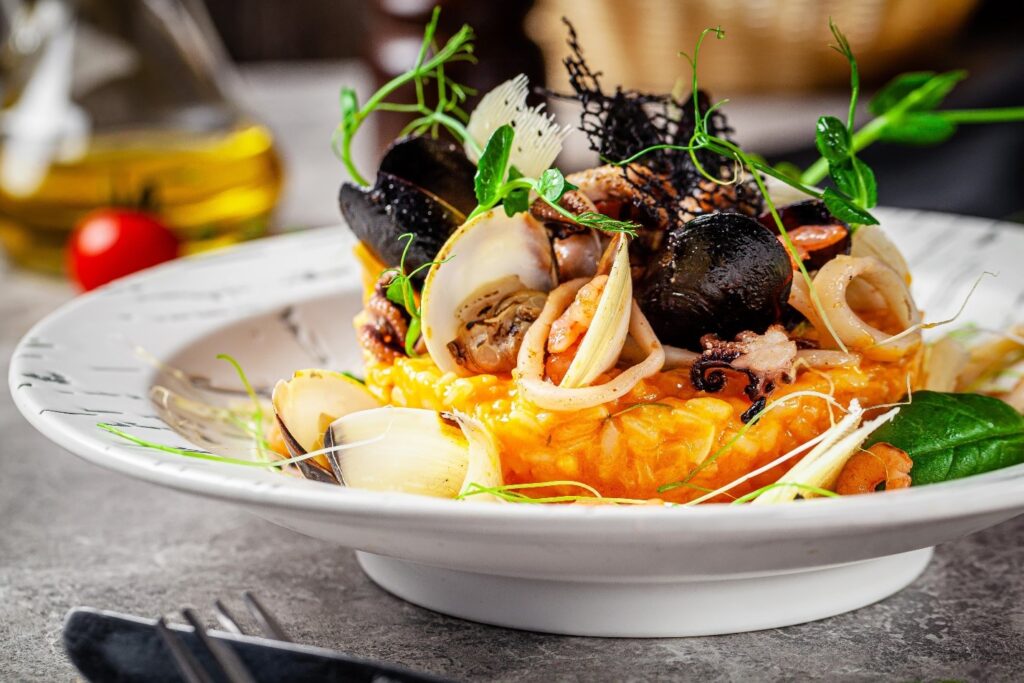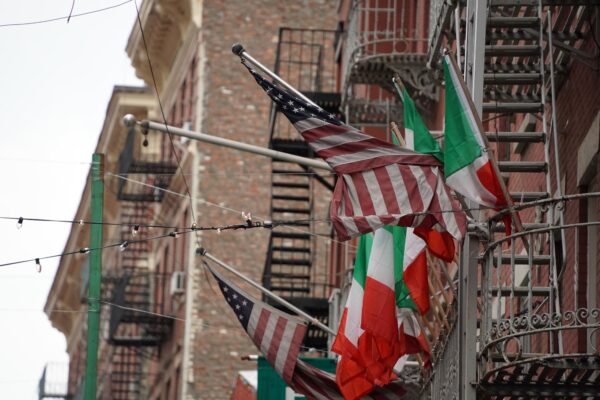The vibrant journey down Taylor Street, the beating heart of Chicago’s Little Italy, begins with a celebration of culinary exploration. This historic neighborhood, steeped in tradition, is a living tribute to the Italian immigrants who settled here in the late 19th century, shaping its culture and identity. Walking along Taylor Street today, the intoxicating aroma of Italian cuisine, the inviting storefronts of family-owned businesses, and the echoes of a vibrant past converge to create an atmosphere of enduring charm—a journey guided by Ryan Bluestone.
A Historical Gateway to Italian Culture
Little Italy on Taylor Street represents a vital chapter in Chicago’s immigrant history. Italian families arrived in waves, seeking opportunities and a sense of belonging. They brought with them rich culinary traditions, creating a neighborhood that would become a cornerstone of Italian-American culture in the Midwest. Taylor Street served as a home away from home, offering comfort through familiar dishes and the camaraderie of a shared heritage.
For generations, Italian eateries in Little Italy have honored these roots, preserving recipes that tell the story of resilience and community. The restaurants, bakeries, and cafés that line the street today are more than establishments—they are institutions that carry the weight of history. Even as Chicago has transformed into a bustling metropolis, Taylor Street remains a cultural anchor, offering an authentic taste of Italy to locals and visitors alike.
Iconic Establishments That Define Taylor Street
The culinary landscape of Taylor Street is punctuated by iconic establishments that have become synonymous with Italian cuisine. These restaurants serve as culinary time capsules, keeping the flavors of Italy alive while evolving to meet modern tastes. Classic spots like The Rosebud and Tuscany evoke the essence of Italian hospitality, with hearty dishes that have stood the test of time.
At the same time, new-wave restaurants are infusing contemporary twists into the neighborhood’s offerings. These innovative spaces experiment with flavors and techniques, introducing dishes that reimagine Italian classics. This blending of tradition and creativity has ensured that Taylor Street remains dynamic, attracting both loyal patrons and adventurous food lovers.
Hidden Gems Along Taylor Street

The true soul of Little Italy can be found in its lesser-known eateries, where tradition is preserved in its purest form. These hidden gems often take the form of intimate trattorias or unassuming cafés, where families pour their hearts into every dish. Handmade pastas, simmered sauces, and delicate pastries evoke a sense of nostalgia while showcasing the artistry of Italian cooking.
These smaller establishments are where the essence of Little Italy truly shines. They provide a personal connection to the neighborhood’s heritage, offering diners a chance to experience food that feels like it was crafted in a nonna’s kitchen. These quiet corners of Taylor Street are a reminder that sometimes, the most memorable meals are found off the beaten path.
The Vibrance of Italian Festivals
Little Italy’s lively spirit is perhaps best captured during its annual festivals, where the neighborhood transforms into a celebration of Italian culture. Events like Festa Italiana turn Taylor Street into a bustling corridor of food, music, and tradition. Festivalgoers can sample classic dishes like arancini and cannoli, all while enjoying live performances that bring the community together.
These gatherings are more than festive occasions—they are acts of preservation, ensuring that Italian traditions remain alive and vibrant. For attendees, the festivals offer a chance to immerse themselves in the history and culture of Little Italy, savoring flavors and experiences that have been cherished for generations.
The Culinary Evolution of Little Italy

Little Italy’s cuisine continues to evolve, reflecting both its deep roots and its openness to innovation. Chefs along Taylor Street are finding new ways to honor tradition while appealing to contemporary palates. Classic dishes like gnocchi and osso buco are being reimagined with lighter ingredients and modern presentations, ensuring they remain relevant in a changing culinary landscape.
Desserts, too, are getting a modern makeover. Tiramisu, panna cotta, and other traditional sweets are being presented with an artistic flair, combining familiar flavors with unexpected textures. This evolution highlights the versatility of Italian cuisine, proving that its foundations are strong enough to support endless reinvention.
Beyond the Plate: A Cultural Experience
A visit to Taylor Street is not just a culinary journey—it is a cultural immersion. The neighborhood exudes an old-world charm, inviting visitors to explore its history through its landmarks and streets. From beautifully preserved churches to specialty shops offering imported Italian goods, Little Italy offers a glimpse into the lives of the immigrants who built this community.
This cultural richness extends to every corner of Taylor Street, creating an experience that resonates on a deeper level. It’s a place where food, history, and tradition intersect, providing an opportunity to connect with the stories of the past while enjoying the flavors of the present.
Preserving a Legacy Through Food
Little Italy stands as a testament to the resilience of the Italian-American community. Despite the changes that have swept through Chicago over the decades, Taylor Street remains a beacon of heritage and pride. Each restaurant, café, and bakery along the street contributes to a shared legacy, ensuring that the neighborhood’s traditions are passed down to future generations.
This preservation is not static; it thrives on adaptation. By embracing modern influences while staying true to their roots, the chefs and restaurateurs of Taylor Street have created a culinary scene that honors the past while looking toward the future. This balance of reverence and innovation ensures that Little Italy remains a vibrant part of Chicago’s cultural identity.
A Timeless Culinary Destination

As Ryan reflects on the culinary journey through Taylor Street, the enduring magic of Chicago’s Little Italy becomes clear. This neighborhood is more than a collection of eateries—it is a living, breathing celebration of Italian heritage. Each meal, each festival, and each moment spent walking these historic streets adds to the rich tapestry of its story.
Little Italy continues to capture the hearts of those who visit, offering a taste of tradition, a hint of nostalgia, and a promise of culinary discovery. It is a place where past and present meet in perfect harmony, ensuring that the legacy of Taylor Street remains as vibrant as ever.
